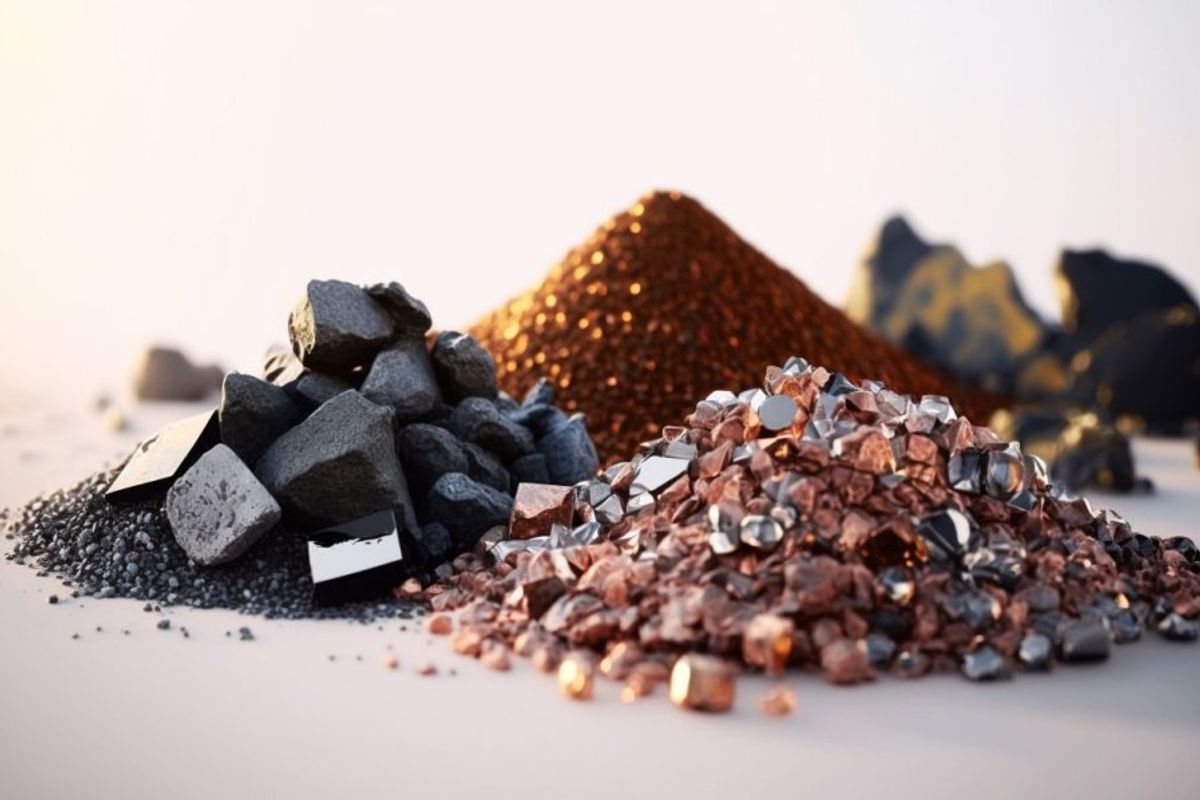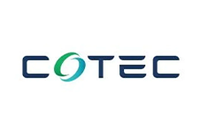Rare Earths Market Forecast: Top Trends That Will Affect Rare Earths in 2024
What's ahead for the rare earths market? Read on to learn more about the rare earths outlook for 2024.

Rare earths have a key role to play in decarbonization, and demand for this group of critical metals is expected to be strong in the coming decades as governments worldwide take steps to meet energy transition targets.
Used in the high-strength magnets found in much of the latest technology, from smartphones and wind turbines to electric vehicles (EVs) and defense systems, rare earth elements (REEs) are not rare; however, finding secure sources of supply is becoming increasingly important to countries around the world due to China's dominance of the sector.
As 2024 begins, what is the rare earths forecast for the year ahead? The Investing News Network (INN) reached out to analysts in the space to find out. Read on to learn what they had to say.
How did rare earths perform in 2023?
Rising supply and depressed demand translated into declining prices for REEs in 2023.
Entrenched inflation and weakening global economic sentiment impacted consumer confidence across geographic markets, lowering demand for new electronics such as mobile devices, appliances and cordless power tools. Demand from two of the biggest downstream applications for rare earths, EVs and wind turbines, also suffered.
These trends placed pressure on prices for magnet rare earths — neodymium (Nd), dysprosium (Dy), terbium (Tb) and praseodymium (Pr) — as downstream users hesitated to make restocking purchases.
“Slower demand for EVs in 2023 has had a negative impact on demand growth for magnets in the current year. Essentially we have seen supply overshoot demand across the EV supply chain,” Willis Thomas of CRU Group told INN in an email. “This will pick up again as EV sales penetration will reach 46 percent by 2030, and in general EV demand has resisted economic headwinds; (it's) just that supply got ahead of demand.”
By mid-July, the daily Rare Earth Price Index from the Association of China Rare Earths Industry had hit a record low, while General Administration of Customs trade statistics for the first six months of year showed that the total value of the country's rare earths exports had declined by 17.1 percent year-on-year, according to MIRU News & Report.
MIRU reported that the rare earths market began to rebound in late August through mid-September, coinciding with a temporary production halt in Myanmar, which accounted for 38 percent of China's rare earth materials imports in the first seven months of 2023. This pushed rare earths prices to their highest level in 20 months, as per OilPrice.com.
“The overall rare earth industry is increasingly being driven by the disparity between Nd and Dy as proxies for light and heavy rare earth magnet raw materials,” the Project Blue team told INN via email. “Myanmar was an important source of feedstock for Chinese refineries to support a growing deficit in supply, though high strategic stocks have also played a key factor in supporting demand growth for neodymium-iron-boron (NdFeB) magnets.”
China soon after set a new rare earths production quota for 2023 that raised its total allowable output by 14 percent over the previous year’s number. As the dominant global supplier of rare earths, the nation’s production quotas have historically been a major driver of rare earths prices. According to Benchmark Mineral Intelligence, the increase could further “entrench low rare earth ore and oxide prices” at a time when “supply is the biggest downward pressure on rare earths prices at the moment although weak downstream demand is also contributing."
In early November, the Chinese Ministry of Commerce announced the tightening of rare earths export controls. The move was largely “a response to stricter limits on U.S. semiconductor exports to China,” reported Nikkei Asia.
By late November and early December, MIRU said prices for rare earths were once again testing new lows.
As of December 13, Strategic Metals Invest was reporting that prices for three of the four main magnet rare earths were down significantly year-to-date: Nd was down 44.77 percent, Pr was down 41.99 percent and Tb was down 44.48 percent. Dy fared comparatively better in 2023, down only 10.74 percent year-to-date, as the heavy REE is undersupplied in the market compared to demand.
What is the rare earths supply and demand forecast for 2024?
Looking ahead to 2024, what supply and demand factors are set to have the biggest impact on rare earths?
Project Blue isn’t expecting any big surprises out of China’s rare earths quotas for 2024.
“Chinese supply is better placed to account for its domestic requirements of light rare earths, with the industry paying close attention to the H1 quota announcements, which have signaled strong growth over the last year,” said the market intelligence firm's team of analysts. “But with relatively weak financial performance, we expect the quota to remain largely flat this year, but still a level capable of meeting domestic 2024 demand.”
Jon Hykawy, president and director of Stormcrow Capital, expressed hesitation at making a call on supply. However, he did say that Chinese mines such as Bayan Obo could easily supply global EV market demand for Nd and Pr — “if Chinese suppliers were acceptable to western buyers." In terms of heavy rare earths like Dy and Tb, which give magnets heat resistance, Hykawy said sources outside of China would be useful.
“Also useful would be cheaper and better ways of processing, separating and metalizing rare earths. Whether investors will get excited about that in an environment where rare earth prices are low, it’s hard to say,” he added.
The quest for ex-China supply has resulted in an increased number of new rare earths mining and processing initiatives in recent years. Japan made big moves early in 2023 to wean itself off China-derived rare earths products, particularly Dy and Tb. The Japan Organization for Metals and Energy Security and Sojitz (TSE:2768), through Japan Australia Rare Earths, inked an agreement to invest AU$200 million in the production and supply of heavy rare earths from Australia-based Lynas Rare Earths (ASX:LYC,OTC Pink:LYSCF). This investment, explains MIRU, will allow Lynas to expand its light rare earths production and begin for the first time the production of heavy rare earths Dy and Tb.
Looking over to the US, in 2022, the Department of Defense awarded a US$35 million grant to MP Materials (NYSE:MP) for a new rare earths processing facility. The company has put that funding to use by commissioning an NdPr separation plant in 2023; it is now working to expand its downstream manufacturing operations to include alloys and magnets.
“A key supply chain to follow will be to see where separated rare earths are sent from MP Materials and how much feedstock (unseparated) is exported to China,” said the Project Blue team. Investors should keep an eye out for further “potential advances in rare earth separation capacity, which in turn will fundamentally need the support from metal, alloying and magnet production capacity to diversify magnet supply chains for OEMs.”
In terms of demand, the largest consumer of rare earths will continue to be the permanent magnet industry, namely NdFeB magnets. Project Blue expects this segment of the market to achieve the strongest year-on-year growth in 2024 and beyond. “China is still by far the largest source of NdFeB magnets, and growth in the country will underpin global demand dynamics in 2024,” the firm’s analyst team told INN.
CRU Group’s Thomas also sees magnet metals such as light rare earths Nd, Pr and samarium as the best positioned to perform well in 2024 and going forward, especially as EV sales increase globally.
Dy, on the other hand, "has a potential supply gap to overcome, which like the magnet metals above is difficult due to the basket problem — all REEs are mined from the deposit, but only some are needed in magnets,” Thomas commented to INN. CRU Group further explains the “REE basket problem” in this 2021 Insights report.
Compared to supply, Stormcrow's Hykawy finds the demand picture easier to paint. Globally, EV sales remain strong, despite the challenges of reliable charging infrastructure and range anxiety on the part of buyers.
“But small-battery plug-in hybrids or range-extended EVs can offer the best of both worlds, and they need electric motors,” he noted. “Rare earth-based magnets offer the simplest approach to powerful and compact electric motors, so continued sales of EVs should bring growing demand for these materials.”
What factors will move the rare earths market in 2024?
While there don't seem to be any market-shaking catalysts on the horizon for rare earths in 2024, there are few key factors that could have an impact on the industry in the new year and beyond.
“Over 2024, the stability of supply from Myanmar will be an important factor to maintain a balance for heavy rare earths. The pace of the ramp up from Chinese investments in Laotian projects will add critical raw materials and potentially replace high-risk supply from Myanmar,” the Project Blue team told INN. “Any disruptions in supply from either Myanmar or Laos will quickly filter through to a reaction in Dy prices, with a lesser impact on Nd.”
For his part, Hykawy thinks 2024 will be short on rare earths catalysts, but he pointed to a number of trends in the space to follow, such as the few companies outside of China developing cost-effective processing technologies.
“There is also the continuing development of alternatives to rare earths to consider, new technology that can provide strong magnets without using rare earths. Again, probably not happening in 2024, but something to keep an eye on,” he said. “Rare earths remain very important to the automotive industry, but it’s not easy to point to a single factor that will rejuvenate investor interest in this space.”
Speaking about rare earths alternatives, Thomas said CRU Group doesn’t expect to see “any more momentum on non-REE magnets in EVs," mainly because of lower rare earths prices and higher availability. “There are known tradeoffs in performance to move away from REE-based magnets, and a large market move to non-REE magnets would come only with sustained high prices or limits to REE magnet availability,” he said.
INN also asked Thomas what actions governments are likely to take in an effort to break away from Chinese supply. He thinks there will continue to be both "carrot" and "stick" approaches to addressing the problem.
On the "carrot" side, the US is incentivizing the development of its REE value chain via the Inflation Reduction Act, which provides R&D funding and project financing, while Australia has long supported domestic mining projects through funding and tax incentives. Meanwhile, policies such as Europe's Critical Raw Materials Act represent the "stick" approach by setting quotas for the supply of domestic versus imported critical raw materials.
“In the end, this boils down to cost in where materials are sourced. Policies which impact relative cost of production/sourcing will be the ones that move the needle on Chinese reliance shares,” said Thomas.
Don’t forget to follow us @INN_Resource for real-time updates!
Securities Disclosure: I, Melissa Pistilli, hold no direct investment interest in any company mentioned in this article.
The Investing News Network does not guarantee the accuracy or thoroughness of the information reported in the interviews it conducts. The opinions expressed in these interviews do not reflect the opinions of the Investing News Network and do not constitute investment advice. All readers are encouraged to perform their own due diligence.



